Phenotypic characterization of single CD4+ T cells harboring genetically intact and inducible HIV genomes
- PMID: 36849523
- PMCID: PMC9971253
- DOI: 10.1038/s41467-023-36772-x
Phenotypic characterization of single CD4+ T cells harboring genetically intact and inducible HIV genomes
Abstract
The phenotype of the rare HIV-infected cells persisting during antiretroviral therapies (ART) remains elusive. We developed a single-cell approach that combines the phenotypic analysis of HIV-infected cells with near full-length sequencing of their associated proviruses to characterize the viral reservoir in 6 male individuals on suppressive ART. We show that individual cells carrying clonally expanded identical proviruses display very diverse phenotypes, indicating that cellular proliferation contributes to the phenotypic diversification of the HIV reservoir. Unlike most viral genomes persisting on ART, inducible and translation-competent proviruses rarely present large deletions but are enriched in defects in the Ψ locus. Interestingly, the few cells harboring genetically intact and inducible viral genomes express higher levels of the integrin VLA-4 compared to uninfected cells or cells with defective proviruses. Viral outgrowth assay confirmed that memory CD4+ T cells expressing high levels of VLA-4 are highly enriched in replication-competent HIV (27-fold enrichment). We conclude that although clonal expansions diversify the phenotype of HIV reservoir cells, CD4+ T cells harboring replication-competent HIV retain VLA-4 expression.
© 2023. The Author(s).
Conflict of interest statement
The authors declare no competing interests.
Figures
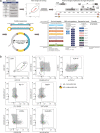
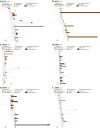
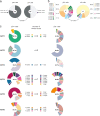
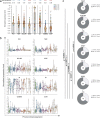
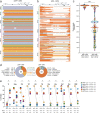

Similar articles
-
HIV-1 Genomes Are Enriched in Memory CD4+ T-Cells with Short Half-Lives.mBio. 2021 Oct 26;12(5):e0244721. doi: 10.1128/mBio.02447-21. Epub 2021 Sep 21. mBio. 2021. PMID: 34544282 Free PMC article.
-
Identification of Genetically Intact HIV-1 Proviruses in Specific CD4+ T Cells from Effectively Treated Participants.Cell Rep. 2017 Oct 17;21(3):813-822. doi: 10.1016/j.celrep.2017.09.081. Cell Rep. 2017. PMID: 29045846 Free PMC article.
-
Genotypic and Phenotypic Diversity of the Replication-Competent HIV Reservoir in Treated Patients.Microbiol Spectr. 2022 Aug 31;10(4):e0078422. doi: 10.1128/spectrum.00784-22. Epub 2022 Jun 30. Microbiol Spectr. 2022. PMID: 35770985 Free PMC article.
-
New Approaches to Multi-Parametric HIV-1 Genetics Using Multiple Displacement Amplification: Determining the What, How, and Where of the HIV-1 Reservoir.Viruses. 2021 Dec 10;13(12):2475. doi: 10.3390/v13122475. Viruses. 2021. PMID: 34960744 Free PMC article. Review.
-
Measuring replication competent HIV-1: advances and challenges in defining the latent reservoir.Retrovirology. 2018 Feb 13;15(1):21. doi: 10.1186/s12977-018-0404-7. Retrovirology. 2018. PMID: 29433524 Free PMC article. Review.
Cited by
-
Impact of MSMEG5257 Deletion on Mycolicibacterium smegmatis Growth.Microorganisms. 2024 Apr 11;12(4):770. doi: 10.3390/microorganisms12040770. Microorganisms. 2024. PMID: 38674714 Free PMC article.
-
AAV vectors displaying bispecific DARPins enable dual-control targeted gene delivery.Biomaterials. 2023 Dec;303:122399. doi: 10.1016/j.biomaterials.2023.122399. Epub 2023 Nov 16. Biomaterials. 2023. PMID: 37992599 Free PMC article.
-
Phenotyping Viral Reservoirs to Reveal HIV-1 Hiding Places.Curr HIV/AIDS Rep. 2025 Feb 4;22(1):15. doi: 10.1007/s11904-025-00723-6. Curr HIV/AIDS Rep. 2025. PMID: 39903363 Free PMC article. Review.
-
SIV infection and ARV treatment reshape the transcriptional and epigenetic profile of naïve and memory T cells in vivo.J Virol. 2024 Jun 13;98(6):e0028324. doi: 10.1128/jvi.00283-24. Epub 2024 May 23. J Virol. 2024. PMID: 38780248 Free PMC article.
-
Spontaneous HIV expression during suppressive ART is associated with the magnitude and function of HIV-specific CD4+ and CD8+ T cells.Cell Host Microbe. 2023 Sep 13;31(9):1507-1522.e5. doi: 10.1016/j.chom.2023.08.006. Cell Host Microbe. 2023. PMID: 37708853 Free PMC article.
References
Publication types
MeSH terms
Substances
Associated data
Grants and funding
LinkOut - more resources
Full Text Sources
Research Materials

